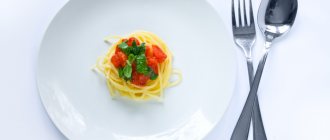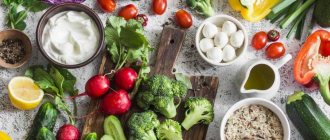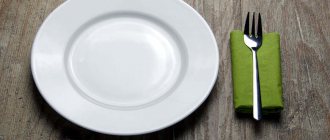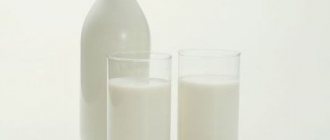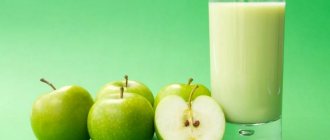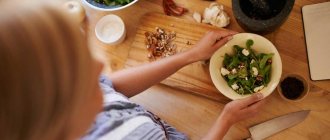The Land of the Rising Sun gave humanity martial arts and original literary genres, high-end automotive and electronic equipment, a love of cherry blossoms and oriental stepped architecture.
The high standard of living, the quality of Japanese technology and goods produced in Japan inspire respect and trust throughout the world. Perhaps this can explain the growing popularity of such a method of losing weight as the Japanese diet. Let’s try to figure out what this diet offers to those who want to lose weight and how effective it is.
Principles of the classic Japanese diet
Before delving into the principles of the Japanese diet, we tried to find out who is the author of this “amazing” method of losing weight. It turned out that its authorship is attributed either to the ephemeral “scientists at the University of Tokyo” or to the 2021 Nobel laureate Yoshinori Ohsumi, a Japanese biologist who received the Prize for studying the mechanism of autophagy (“cell self-eating”). And also Paul Gregg, a naturopath, showman and the first adherent of alternative medicine in the USA. In any case, the basic principles of the Japanese diet largely echo the conclusions of this extraordinary person.
Basic principles of the diet: 3 meals a day, contrary to the concepts of proper nutrition (PN), and complete refusal of salt, sugar and flour products, except for those provided for in the menu.
What products are included
The Japanese diet menu, designed for 14 days, should contain Japanese cuisine, which is very unusual for the digestive system of Europeans. But in fact, the food set turns out to be quite familiar. The menu is dominated by protein foods - meat, fish, eggs. Vegetables:
- cabbage (used raw and boiled);
- carrots (raw only);
- tomatoes (in the form of juice);
- zucchini (simmered in vegetable oil).
From fats, olive or other vegetable oil is used, from dairy products - kefir and hard cheese.
Dietary foods
Salt-free nutrition
The list of products offered for the Japanese diet is initially inspiring, even though bread is not included in it. However, when it turns out that all these foods should be cooked, stewed or eaten raw without salt, many people think twice about it.
They have been saying that “salt is white death” since the late 70s of the 20th century, because it:
- retains fluid in the body and increases blood pressure;
- leads to the appearance of edema;
- deposited in all cells of the body.
A salt-free diet is not an easy test for a person who is accustomed to adding salt to food, but in order to achieve the goal, you can avoid adding salt to your dishes for 2 weeks.
If you believe reviews about the Japanese diet, many people tolerate the absence of salt in their food quite calmly for 14 days.
Contraindications
Supporters of the Japanese diet claim that it has virtually no contraindications, but those can be identified based on the features of the menu. This diet is dangerous for the following groups:
- persons with impaired renal function;
- people with pancreas problems;
- persons with cardiovascular problems;
- people with unstable psyches.
It can be assumed that patients do not turn to diets to lose weight, but reviews show that this is not the case. They just need to be extremely careful.
When choosing a diet, you should be reasonable about your health
I would like to draw attention to the “breakfast” offered in the diet – coffee. A cup of coffee cannot be called breakfast, if only because, according to the provisions of the PP, breakfast must be hearty. The calorie content of 100 g of sugar-free coffee is only 1.94 kcal, the proteins, fats and carbohydrates in it are 0.14 g, 0.14 g and 0.03 g, respectively. In addition, coffee contains oxalic acid, so it is not advisable to drink it on an empty stomach.
Prohibited Products
Prohibited products include:
- meat - pork, lamb, as well as all kinds of sausages.
- fish - fatty fish, for example, mackerel, salmon, herring, halibut;
- fatty dairy products, as well as milk and cottage cheese;
- vegetables - mostly starchy, potatoes, corn;
- fruits - sweet fruits such as bananas, grapes, mangoes, persimmons;
- smoked and pickled foods, canned food and any semi-finished products;
- marinades and sauces;
- packaged juices;
- soda;
- alcohol;
- sugar and salt;
- flour products
- cereals
You can learn more about the diet, permitted and prohibited foods in the video:
Detailed menu for 14 days
Those who have resorted to the Japanese diet not for the first time willingly share their experience in reviews, reassure themselves and others that it is only for 14 days and assure that a good motivation is the fact that weight loss is expected from 3 to 8 kg, depending from the original weight.
Table. Menu for every day, which should be followed for 2 weeks
Diet for two weeks
Tips from those who have lost weight:
- coffee can be replaced with green tea;
- It is better to take Chinese cabbage for salads;
- instead of tomato juice, you can eat an equivalent amount of fresh tomatoes by weight;
- crackers can be replaced with toast;
- The preferred fish is pollock or hake.
It is advised to start preparing for the diet 7 days before it starts - give up fast food, carbonated drinks, and fried foods. Then the body will more easily accept the 14-day restrictions.
If at any stage of the diet the body shows its disagreement with alarming symptoms (bloating, belching, heartburn, upset stool), you should stop the diet and consult a doctor.
Yaelo Clinic Diet
The Japanese clinic Yaelo, which is not listed in either Russian-language or English-language registers, is well known to diet lovers. This mysterious institution is credited with being the author of a diet that lasts 13 days.
What not to eat
The Yaelo diet also involves eating food without salt. In addition to salt, the following are prohibited on the 13-day diet:
- sugar and sweets;
- spices;
- flour products (except for rye crackers provided in the menu);
- sweet fruits;
- semi-finished products;
- carbonated drinks;
- alcohol.
Proponents of the diet warn that it is in the interests of those losing weight not to violate regulations and prohibitions and to strictly follow the recipes of the dishes offered (for example, if it says to cook, you should not fry). It is argued that otherwise the results of the Japanese diet will not be as impressive as the advertising promises.
Dish option for the Japanese salt-free diet
Sample menu for 13 days
The Yaelo diet menu is similar to the “classic” Japanese diet, when compared with the detailed, in grams, layout of dishes for 2 weeks given above. The only difference is its duration (13 days) and the fact that there is no lunch on the 13th day.
In between meals, it is recommended to drink a sufficient amount of liquid (at least 1.5 liters) - clean drinking or mineral water without gas. For those who do not dare to undergo 13-day dietary restrictions, diet options for 9, 7 days and even 3 days are offered with similar composition, although significant weight loss is not promised.
Rules
- Use only specified products.
- The sequence of days and meals cannot be changed.
- Salt, sugar, alcohol, confectionery and flour products (except for those indicated) are completely excluded from the diet.
- Every day you should drink 1.5–2 liters of clean water without gas.
- If you don't drink coffee, drink green tea without additives or flavorings.
- Zucchini can be replaced with one of the following products: beets, pumpkin, boiled or fried carrots, zucchini, parsnip root. This replacement will not affect the result of weight loss (provided that all rules are followed).
- Zucchini (or a vegetable alternative to zucchini) can be baked in foil and eaten with the addition of 1 teaspoon of vegetable or olive oil.
- The raw egg can either be omitted or replaced with a boiled one.
- Drinking green or herbal tea between meals is allowed.
- Before you begin, you must consult with a specialist.
- This can be repeated no more than twice a year.
Banana diet
Those who prefer to lose weight in a tasty way will like the banana diet, which is also credited with the authorship of the Japanese Hiroshi Watanabe. We suspect that the well-known director and animator in Japan and abroad does not realize that he wrote a book about weight loss, “The Morning Banana Diet.” Nevertheless, adherents of the book exist, although no one seems to have seen the “bestseller” itself. Proponents of banana weight loss promise minus 7 kg in a week of a very light diet and report that this is due to the resistant starch found in bananas. But we learned a little more about this starch than the authors of advertising texts:
- Resistant starch is found only in green, unripe bananas (as well as raw potatoes, peas and legumes).
- Its benefit lies in improving intestinal microflora and, as a result, metabolism.
For these effects to work, bananas must be eaten green. The “Morning Banana Diet” exaggerates everything to the point of being extremely simple:
- In the morning on an empty stomach you need to drink a glass of warm water;
- after 20-30 minutes, eat 1 banana (or 2, if you really want to);
- eat nothing else until lunchtime.
During lunch and dinner, you can eat whatever you want, the main thing is that dinner is no later than 20:00, go to bed no later than 23:00, do not drink alcohol at all and do not consume fermented milk products. And so on for 7 days.
There is an option for 3 days, when during this time they eat only bananas, washing them down with milk or kefir. It is allowed to eat up to 1.5 kg of the “yellow miracle” (that is, well ripe) per day. In between meals, drink green tea and mineral water. The result is minus 3 kg.
Banana diet
The “power window” concept: what it is and how effective it is
Another method of losing weight, attributed to biologist Yoshinori Ohsumi, is based on maximally narrowing the “nutrition window” to 8 hours and expanding the “hunger period” to 16 hours. The “nutrition window” in this case is the period of time of day during which we periodically take food. For example, if you have breakfast at 8 a.m. and dinner at 8 p.m., your eating window is 12 hours.
It should be noted right away that the name of a famous biologist is illegally present in this diet. The author of “intermittent fasting,” according to the Russian service BBC NEWS, is “self-proclaimed consultant nutritionist Naomi Whittell.” She was the first to develop the concept of a 15-day weight loss program, 3 times a week, including 16-hour fasting. A 16-hour “hunger window” results from skipping breakfast. That is, the first meal is postponed until 12 noon, even if you woke up at 7 am. There are 8 hours left before dinner, this will be the “nutrition window” in which you can eat everything related to PP.
According to reviews, the “power window” gives good results, despite the revolutionary nature of the concept.
Dietary recommendations for men
Men whose muscle mass exceeds that of women should be careful with strict diets. A lack of protein foods and low calorie foods will lead to loss of muscle mass and, possibly, gain of fat (this is how the body can react to the threat of losing weight). Men need to eat a calorie-rich diet, especially those who burn calories through physical activity. If there are fat deposits, short-term low-calorie diets and increased physical activity are allowed.
You need to give up junk food
Benefits for the body
Water is a universal cure for many problems. Considering that 70% of our body is fluid, its deficiency negatively affects our physical condition. Headache and joint pain, poor skin color, wrinkles - this is a short list of what happens to the body when there is not enough fluid. Water has a positive effect on the following processes in the body:
- Normalization of pressure. One of the reasons for high blood pressure is a lack of fluid. Due to water, the blood in the circulatory system becomes less viscous and more fluid, which stabilizes the condition of the body.
- Digestion. For the normal functioning of the gastrointestinal tract, water is required, and if there is a lack of it, constipation and digestive problems begin to occur.
- Cleansing the body. Water removes all harmful substances, including toxins that enter our body along with alcohol or medications.
- Body temperature. In hot weather, a person sweats a lot, so it is important to drink the required amount of fluid to avoid overheating and dehydration.
- Rejuvenation of the body. With age, moisture in the tissues becomes less and less, which is why the body quickly acquires a dry and flabby appearance.
- The work of the joints. Lack of fluid leads to arthrosis, osteochondrosis and other joint diseases.
Dehydration of the body can lead to very unpleasant consequences, such as infectious diseases and excess weight.
Quitting the Japanese Diet
Whatever type of Japanese diet you choose, you need to be able to get out of it correctly. This means that the skills acquired in 14 days - not to salt or sweeten food - should be preserved as much as possible in the next 1-2 weeks. Despite the body’s call to return to a normal diet as quickly as possible, you need to adjust to the following principles for leaving the Japanese diet:
- gradualism - you should return to your usual diet slowly, over 7-14 days, gradually eliminating strict restrictions;
- smooth expansion of the menu - this requirement follows as a continuation of the first and means gradually adding 1-2 products to the diet (for example, one cereal and 1 dairy product) per day;
- balanced diet - when leaving the diet, you should refrain from simple carbohydrates and fats of animal origin.
After 2-3 years, it is recommended to repeat the Japanese diet, but during this time it is advisable not to participate in lavish feasts, not to indulge in flour and sweet, salty and fatty foods.
Contraindications
- Diseases of the gastrointestinal tract (gastritis, gastroduodenitis, peptic ulcer of the stomach or duodenum).
- During pregnancy and lactation.
- Any chronic kidney and liver diseases.
- Anemia.
- Avitaminosis and hypovitaminosis.
- Acute infectious diseases.
- Diabetes.
- Cholelithiasis.
- Any condition in the acute stage.
- Chronic diseases of internal organs.
Review of reviews from those who have lost weight about the results
Before you decide to follow the Japanese diet, you should read reviews of those who have lost weight about the results they achieved. As usual, everyone has different numbers - from 3 kg in 2 weeks to 8 kg in 21 days (taking into account the weekly preparation for the Japanese diet).
The best results will come from proper nutrition combined with exercise.
The most effective option
Comparing the results of the assessments of those who lost weight, we will see that the diet based on intermittent fasting (“eating window”) received the largest number of positive reviews and recommendations; 93% voted for it. The Japanese diet - 13 days without salt - is recommended by only 79% of people who wrote reviews. The 7-day banana diet was praised in 87% of reviews. Thus, the “power window” is recognized as the most effective option.
Is it possible to lose 10 kg?
The number of kilograms lost, as the experience of those who have lost weight has shown, depends on the initial weight. The girls who responded with positive feedback judiciously stated that it was physiological to lose 3-4 kg per month, and they achieved this result in 14 days.
It is theoretically possible to lose 10 kg during a diet, but this will be a stressful weight loss for the body. So it’s better to lose weight slowly but surely, that is, without regaining the lost kilograms.
Nutritionist opinion
The water-based diet is one of the few that nutritionists and doctors view positively. Water is the main component of our body, so drinking it is only beneficial. With other diets, it is often recommended to drink more liquid, as it helps the body remove harmful toxins.
Each diet has different variations, ranging from simple drinking half an hour before meals to water fasting. Another controversial point is the amount of fluid consumed. It is impossible to name the exact acceptable norm, since each person is individual, which is why doctors are wary of such moments. In addition, there are contraindications:
- Kidney diseases.
- Urinary tract problems.
- Tendency to swelling.
- Pregnancy and lactation period.
- Heart diseases.
- Taking diuretics.
To protect yourself from possible problems, you should fully study all the rules and take a responsible approach to losing weight. If any symptoms appear, such as headaches or digestive problems, the diet should be stopped immediately.
